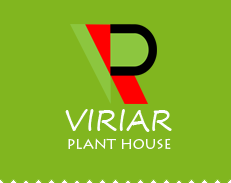VIRIAR
Ensete lecongkietii - Orphan Banana - 5 seeds
Ensete lecongkietii - Orphan Banana - 5 seeds
Couldn't load pickup availability
Plant Description
Name: Ensete lecongkietii
Common Name: Lecongkiet's Banana, Vietnamese Wild Banana
Ensete lecongkietii, commonly known as Lecongkiet's Banana or Vietnamese Wild Banana, is a rare and relatively recently discovered species of banana native to Vietnam. This species belongs to the Musaceae family and is closely related to other bananas and plantains but differs significantly in its botanical characteristics. It was named in honor of Dr. Le Cong Kiet, a Vietnamese botanist who contributed to the study and conservation of plant species in Vietnam.
Ensete lecongkietii is a large, herbaceous plant with a robust, pseudo-stem that can reach heights of 3-5 meters (10-16 feet). The leaves are long, broad, and paddle-shaped, typical of banana plants, with a vibrant green color and sometimes tinged with red along the midrib. Unlike edible bananas, this species produces small, inedible fruits with hard seeds. The inflorescence is particularly striking, with large, colorful bracts that protect the flowers, adding ornamental value to the plant. It is primarily grown for its aesthetic appeal and is an excellent choice for tropical and subtropical gardens.
Cultivation of Ensete lecongkietii
Conditions:
- Light: Ensete lecongkietii thrives in full sun to partial shade. It prefers bright, direct sunlight for optimal growth but can tolerate some shade, especially during the hottest part of the day.
- Temperature: This plant prefers warm, tropical climates with temperatures ranging from 20-30 °C (68-86 °F). It is sensitive to frost and should be protected from cold temperatures, making it suitable for USDA zones 9-11.
- Soil: The Vietnamese Wild Banana prefers well-draining, fertile soils rich in organic matter. It can adapt to a range of soil types, including loamy or sandy soils, but it thrives best in slightly acidic to neutral pH conditions.
- Water: Regular watering is essential, especially during the growing season. The soil should be kept consistently moist but not waterlogged. During the dry season or in arid climates, increase watering to ensure the plant remains hydrated.
Planting and Care:
- Planting: Choose a location with full sun to partial shade and well-draining soil. If planting in the ground, ensure there is enough space for the plant to spread out, as it can become quite large. For container planting, use a large pot with adequate drainage and a nutrient-rich, well-draining potting mix.
- Fertilization: Feed Ensete lecongkietii with a balanced, slow-release fertilizer during the growing season, applying it every 4-6 weeks. A fertilizer high in potassium can help promote strong, healthy growth. Reduce fertilization during the winter when the plant’s growth slows down.
- Maintenance: Prune off any dead or damaged leaves to maintain the plant's appearance and encourage new growth. Ensete lecongkietii is generally resistant to pests and diseases, but it’s still a good idea to monitor for common issues like aphids or fungal infections.
Growing from Seeds
- Seed Preparation: The seeds of Ensete lecongkietii have a hard outer shell, so soaking them in warm water for 24-48 hours before sowing can help soften the seed coat and improve germination rates.
- Sowing: Sow the seeds in a well-draining seed-starting mix, placing them about 1-2 cm (0.5-1 inch) deep. Lightly cover the seeds with soil and water thoroughly.
- Germination Conditions: Place the seed tray in a warm, humid environment with temperatures around 25-30 °C (77-86 °F). Keep the soil consistently moist, but avoid waterlogging. Germination can be slow and may take several months.
- Care for Seedlings: Once seedlings emerge, provide them with bright, indirect light and gradually acclimate them to more direct sunlight as they grow. Transplant seedlings into larger pots or directly into the garden when they are large enough to handle.
Ensete lecongkietii is a rare and beautiful banana species that brings a tropical flair to any garden. Its impressive size, striking foliage, and ornamental inflorescences make it a standout choice for plant enthusiasts and gardeners looking to cultivate something unique and exotic.
Shipping & Returns
Shipping & Returns


















